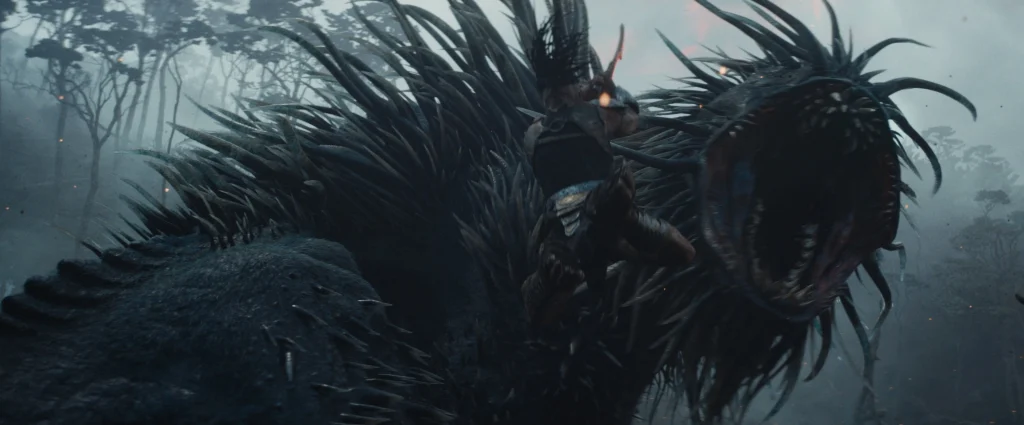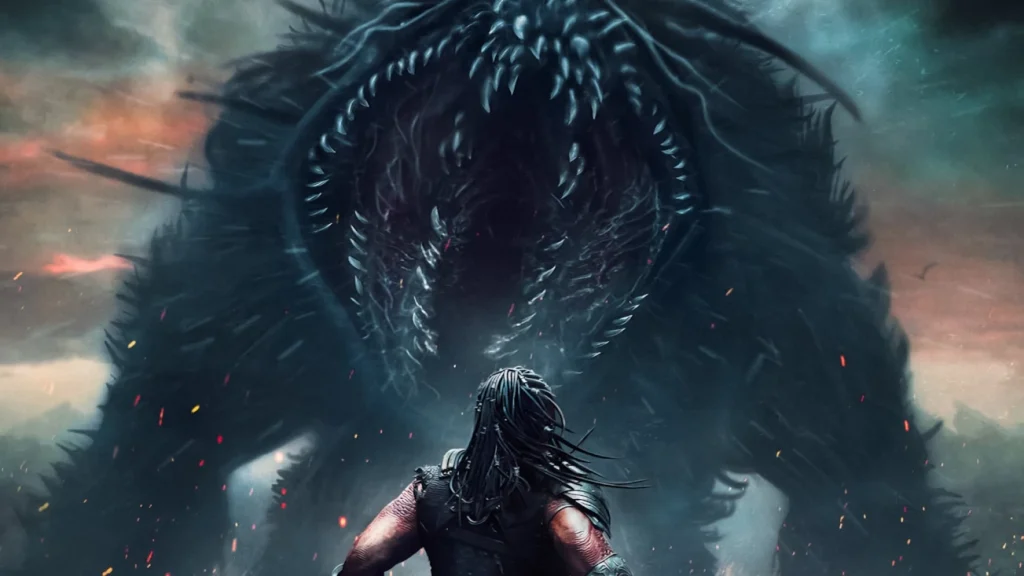
I can’t stop thinking about the Kalisk.

If you haven’t watched the Predator Badlands Movie yet, please don’t proceed. There are very mild spoilers/hints that might ruin the entire experience for you. Please don’t. I’m warning you not to proceed.

Okay, back to the Kalisk.
That creature — that wild, clawed, snorting, angry, almost beautiful monster — just burned itself into my brain the moment it showed up on screen. It’s like the filmmakers decided that the Predator universe needed its own version of Grogu (from the Mandalorian franchise), and then said, “But let’s make it meaner. Faster. Smarter. Hungrier.”
And boy, did they deliver.
I’m still running on the high from watching Predator Badlands at SM Lanang Premier with the Davao Bloggers Society.
(If you haven’t seen it yet, go.
Don’t even finish this article. Just go.)
Because somewhere between the chaos, the desert heat, and the bodies dropping left and right, there it was — the Kalisk, a creature that feels so believable you start wondering if evolution just forgot to make one in real life.
The Kalisk and Its Untamed Charm
The Kalisk is like a wild animal pulled straight from the fever dream of a biologist who listens to metal. It’s sleek but brutal. It moves with purpose. Every time it appears, the soundtrack just goes full tribal-industrial, and you know something’s about to die.
What I love about the Kalisk is that it’s not just another alien beast designed to fill space.
It feels alive.
It’s got instincts, habits, even a strange sort of intelligence that reminds me of apex predators we actually have on Earth.
When you watch it stalk its prey — slow, deliberate, calculating — it’s like seeing a wolverine, a Tasmanian devil, and a honey badger merged into one nightmare fuel creation.
Wolverine, The Animal — and the Marvel Kind
Let’s talk about the wolverine for a sec.
The real-world animal, not Hugh Jackman’s mutant alter ego (though we’ll get there in a bit).
Wolverines are pound-for-pound some of the toughest creatures on the planet. They’re not that big, but they’ll fight wolves, bears, and even chase off humans. They’re stubborn survivors, known for their raw strength and refusal to die quietly.
Now imagine that — but supercharged with alien biology.
That’s the Kalisk.
It’s got the same low, powerful stance. The same viciousness in every movement. But instead of fur, it’s got what looks like overlapping scales or armor plates, giving it that “living weapon” vibe that fits right in the Predator universe.
Then there’s the Wolverine from Marvel Comics — the clawed anti-hero who just keeps getting back up, no matter what.
Unkillable.
Angry.
Brooding.
That’s the Kalisk in creature form.
You can almost hear the parallel in every growl: a kind of rage that’s not just instinctual, but spiritual. A creature that doesn’t fight for dominance — it fights because that’s what it is.
That’s probably why the Kalisk is my new spirit animal.
Because who doesn’t want to embody that kind of unstoppable energy?
Bud’s Antics and Dek’s Shadow
Now, let’s talk about Bud — the comic relief of Predator Badlands.
This guy cracks me up every time he tries to emulate Dek, the main character who’s got that no-nonsense Yautja vibe.

The way Bud tries to imitate Dek’s every move adds that much-needed human balance to the film’s grimness. The Kalisk might be tearing through everyone like tissue paper, but Bud reminds you that this is still a movie — and that even in the middle of chaos, we can laugh.
And weirdly, his scenes with the Kalisk gave me a sense of empathy for the creature. Like, even monsters can be misunderstood.
Even horrendous beasts can have layers.
If the Kalisk Were Real
If the Kalisk was a realearth creature, given its regenerative capabilities (because come on, that thing took a beating and kept coming), I’d say biologists would have a field day studying it.
Imagine if we could harness its healing ability for medicine — new treatments for wounds, organ repair, or even anti-aging breakthroughs.
Yeah… now I sound like the Weyland-Yutani group.

Ooops.
Go watch it.
Seriously.
Scientists already study real animals like salamanders, axolotls, and starfish for their regenerative powers.
But a Kalisk?
That would be next-level. It could revolutionize how we treat trauma injuries or even cancer.
Of course, it would probably kill half the research team before they could collect a sample. But hey — progress always comes at a price, right?
Why the Kalisk is My New Spirit Animal
Maybe I’m projecting here, but there’s something deeply personal about identifying with a creature like the Kalisk.
It’s not pretty.
It’s not majestic like a lion or noble like an eagle.
It’s rough, angry, and primal.
And yet, it feels honest.
We all have that side of us — the part that refuses to stay down no matter how hard life smacks us around. The part that keeps clawing, keeps pushing, keeps surviving.
The Kalisk is that.
It’s the spirit of persistence, wrapped in scales and fury.
It’s easy to idolize superheroes or movie icons, but sometimes what we really connect with isn’t the polished version of power — it’s the raw, unfiltered will to live.
Closing Thoughts
As I’m writing this, I’ve got the Predator Badlands soundtrack playing again — that tribal-metal fusion that just makes everything feel ten times more epic. And yeah, I’m still thinking about the Kalisk.
If there’s one creature from the Predator franchise that deserves its own spin-off, this is it. I’d pay good money to see the origin of this beast. Where it came from. What it hunts. What hunts it.
Maybe that’s the beauty of it — the Kalisk represents the kind of ferocity we wish we had when facing the unknown.
Unyielding.
Untamed.
Unapologetically alive.

